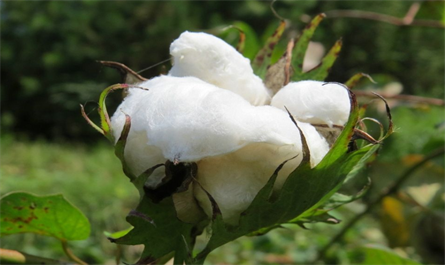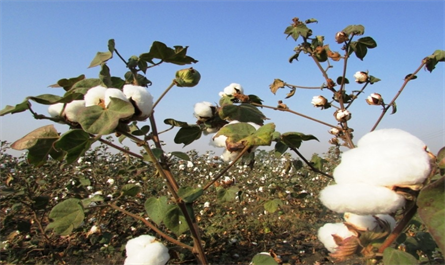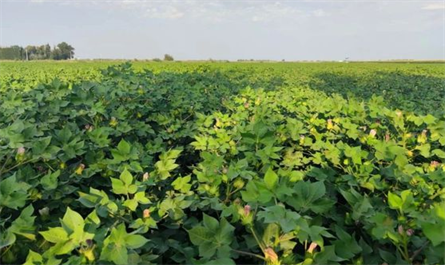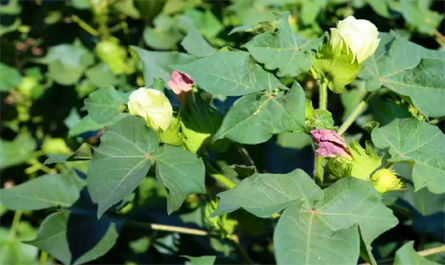Detailed Explanation of Plant Growth Regulators for Cotton Yield Increases
In recent years, with the widespread adoption of cotton cultivation, various plant growth regulators have played an increasingly important role in promoting cotton growth. To help cotton farmers and technicians better understand these regulators, we have searched the China Pesticide Information Network and compiled a list of 286 pesticides registered for cotton with significant growth-promoting effects. This article summarizes the main types of plant growth regulators used to increase cotton yields.

[1. Mepiquat chloride]
Mepiquat chloride is a type of plant growth regulator. It is available in various forms, including aqueous solutions and powders, and as many as 49 types have been registered for use on cotton. As a plant growth regulator, mepiquat chloride has multiple functions. It effectively inhibits cell elongation and hinders the biosynthesis of gibberellins. This regulator promotes nutrient absorption by roots, stems, and leaves, thereby stimulating chlorophyll synthesis. By inhibiting the elongation of the main stem and fruiting branches, Mepiquat chloride promotes a more compact plant shape, delaying row closure, preventing excessive growth, improving field ventilation and light penetration, and further enhancing photosynthesis. It also controls excessive crop growth and reduces the loss of ineffective nutrients. By enhancing root vitality, Mepiquat chloride promotes root development, increases taproot length, and increases the number of lateral roots, thereby improving crop resistance to stresses, including lodging, drought, and waterlogging. Appropriate use of Mepiquat chloride can effectively regulate the balance between vegetative and reproductive growth, promoting the latter, reducing flower and fruit drop, accelerating fruit ripening, and improving fruit quality, ultimately increasing yield and income.
[2. Chlormequat Chloride]
There are 17 chlormequat chloride products registered for cotton on the market, including both aqueous and powder formulations. These products exert their growth control effects by inhibiting kaurene production and blocking gibberellin biosynthesis. As a gibberellin antagonist, Chlormequat Chloride effectively regulates cotton growth, preventing lodging while also enhancing photosynthesis and increasing crop stress tolerance, thereby improving quality and increasing yield.
[3. Sodium Nitrophenolates (Atonik)]
As a plant cell activator, Sodium Nitrophenolates (Atonik) rapidly penetrates the plant body, promoting the flow of protoplasts and accelerating rooting. This substance promotes various stages of crop growth, including rooting, growth, reproduction, and fruiting, particularly in promoting pollen tube elongation and enhancing fertilization and fruiting capacity. Furthermore, it can aid the growth and development of crops like cotton, promoting early flowering, breaking dormancy, promoting germination, and helping to reduce flower and boll drop, further improving product quality. Notably, unlike plant hormones, Sodium Nitrophenolates (Atonik) can be used flexibly throughout the plant's growth cycle, from sowing to harvest.
Sodium Nitrophenolates penetrates deeply into plants, effectively promoting the flow of protoplasts, significantly accelerating rooting. This plant cell activator exhibits varying degrees of stimulating effects on various stages of crop growth, including rooting, growth, reproduction, and fruiting. Its application is also quite flexible, allowing for various methods such as foliar spraying, seed soaking, seedbed irrigation, and bud spraying.

4. 1-Naphthyl Acetic Acid (NAA)
Naphthyl Acetic Acid, as a plant growth regulator, plays a vital role in cotton production. Through systemic absorption, it helps plants maintain flowers and fruits, increases fruit set, and further promotes fruit size and early maturity. Furthermore, Naphthyl Acetic Acid controls excessive cotton growth, providing strong support for yield increases. Notably, it is also a key ingredient in rooting powders commercially available, significantly promoting plant rooting.
5. Brassinolide (BRs)
Brassinolide, a sterol-based plant growth regulator, effectively stimulates the plant's inherent potential, enhances seed vigor, and promotes healthy root development. It also regulates plant growth, promoting robustness and improving fertilizer efficiency. Furthermore, it enhances crop resilience to stresses, such as drought and cold, and improves fruit set. Whether used alone or in combination with other regulators, brassinolide can be used as an adjunct to combating drug damage or preventing and controlling diseases, providing strong support for agricultural production.
[6. 28-epihomobrassinolide]
As a plant growth regulator, 28-epihomobrassinolide exhibits unique dual effects: it promotes plant cell division and elongation while also supporting the vigorous growth of the root system. Furthermore, it enhances photosynthesis, injecting new vitality into agricultural production.

[7. S-abscisic Acid (S-ABA)]
S-abscisic acid (S-ABA), a natural plant growth regulator, excels at promoting coordinated plant growth. It can induce the expression of multiple stress-resistant genes, thereby improving plant growth quality and significantly enhancing its ability to withstand adverse environments. Furthermore, S-abscisic acid (S-ABA) enhances plant photosynthesis, promotes healthy root growth, and promotes the synthesis and accumulation of nutrients. These combined advantages help improve crop quality and significantly increase yield.
[8. Indole-3-Butyric Acid (IBA)]
Indole-3-Butyric Acid (IBA), an endogenous plant auxin, easily enters the plant body through leaves, young epidermis, and seeds, and is transported to key areas along with nutrient flow. This hormone induces the differentiation of root primordia, promoting rapid rooting and accelerating root growth and development. This not only significantly increases the number of capillary roots and the length of lateral roots, but also helps build a robust root system, shortening the time it takes to green up after transplanting, significantly improving transplant survival rates and resistance to stress. Furthermore, it promotes tillering and seedling formation, renews the root system, and strengthens the plant, thereby increasing yield and improving quality.
9. Gibberellic Acid (GA3)
Gibberellic acid, a plant growth regulator, is widely present in plants and is a key hormone that promotes plant growth and development. It antagonizes growth inhibitors such as paclobutrazol and chloromequat chloride, jointly regulating plant growth. Gibberellic acid stimulates cell division, promotes stem elongation and leaf expansion, and induces parthenocarpy, accelerating fruit development. Furthermore, it can break seed dormancy, adjust the ratio of male and female flowers, influence flowering timing, and reduce flower and fruit drop. When exogenous gibberellic acid enters the plant, it exerts physiological effects similar to endogenous gibberellins, promoting robust plant growth.

10. Diethyl aminoethyl hexanoate (DA-6)
DA-6 has significant regulatory and growth-promoting effects on cotton. It effectively increases the content of chlorophyll, protein, and nucleic acids in the plant, thereby accelerating photosynthesis and enhancing the activity of peroxidase and nitrate reductase. DA-6 also regulates the plant's carbon and nitrogen metabolism, enhances its ability to absorb water and nutrients, and helps maintain water balance within the plant. These effects collectively enhance cotton's drought and cold tolerance.
[11. Ethephon]
Ethephon is a growth regulator that promotes plant maturation. Once it enters the plant, it releases ethylene based on the pH of the plant tissue, thereby accelerating the plant's maturation process. Ethephon also has a wide range of effects, including inhibiting elongation growth, promoting organ abscission, inducing flower bud differentiation, promoting germination, and stimulating adventitious root formation.
[12. Thidiazuron (TDZ)]
Thidiazuron (TDZ) is a heterocyclic aromatic urea plant growth regulator commonly used as a defoliant in cotton cultivation. It is absorbed by cotton leaves, promoting the formation of a natural abscission layer between the stem, leaf, and petiole, thereby achieving leaf drop.
13. 6-Furfurylaminopurine Kinetin (6-KT)
Kinetin, an endogenous plant cytokinin, has a wide range of applications. It effectively induces flower bud differentiation, improves bud quality, and promotes flower formation and increases the number of viable flowers. It also preserves flowers and fruit, stabilizes and strengthens fruit, and reduces fruit cracking. Kinetin also improves crop pollination, promotes fruit set, delays plant aging, and promotes grain filling. It can even stimulate the growth of lateral branches and buds, increase chlorophyll content, and thus enhance photosynthesis efficiency.

[1. Mepiquat chloride]
Mepiquat chloride is a type of plant growth regulator. It is available in various forms, including aqueous solutions and powders, and as many as 49 types have been registered for use on cotton. As a plant growth regulator, mepiquat chloride has multiple functions. It effectively inhibits cell elongation and hinders the biosynthesis of gibberellins. This regulator promotes nutrient absorption by roots, stems, and leaves, thereby stimulating chlorophyll synthesis. By inhibiting the elongation of the main stem and fruiting branches, Mepiquat chloride promotes a more compact plant shape, delaying row closure, preventing excessive growth, improving field ventilation and light penetration, and further enhancing photosynthesis. It also controls excessive crop growth and reduces the loss of ineffective nutrients. By enhancing root vitality, Mepiquat chloride promotes root development, increases taproot length, and increases the number of lateral roots, thereby improving crop resistance to stresses, including lodging, drought, and waterlogging. Appropriate use of Mepiquat chloride can effectively regulate the balance between vegetative and reproductive growth, promoting the latter, reducing flower and fruit drop, accelerating fruit ripening, and improving fruit quality, ultimately increasing yield and income.
[2. Chlormequat Chloride]
There are 17 chlormequat chloride products registered for cotton on the market, including both aqueous and powder formulations. These products exert their growth control effects by inhibiting kaurene production and blocking gibberellin biosynthesis. As a gibberellin antagonist, Chlormequat Chloride effectively regulates cotton growth, preventing lodging while also enhancing photosynthesis and increasing crop stress tolerance, thereby improving quality and increasing yield.
[3. Sodium Nitrophenolates (Atonik)]
As a plant cell activator, Sodium Nitrophenolates (Atonik) rapidly penetrates the plant body, promoting the flow of protoplasts and accelerating rooting. This substance promotes various stages of crop growth, including rooting, growth, reproduction, and fruiting, particularly in promoting pollen tube elongation and enhancing fertilization and fruiting capacity. Furthermore, it can aid the growth and development of crops like cotton, promoting early flowering, breaking dormancy, promoting germination, and helping to reduce flower and boll drop, further improving product quality. Notably, unlike plant hormones, Sodium Nitrophenolates (Atonik) can be used flexibly throughout the plant's growth cycle, from sowing to harvest.
Sodium Nitrophenolates penetrates deeply into plants, effectively promoting the flow of protoplasts, significantly accelerating rooting. This plant cell activator exhibits varying degrees of stimulating effects on various stages of crop growth, including rooting, growth, reproduction, and fruiting. Its application is also quite flexible, allowing for various methods such as foliar spraying, seed soaking, seedbed irrigation, and bud spraying.

4. 1-Naphthyl Acetic Acid (NAA)
Naphthyl Acetic Acid, as a plant growth regulator, plays a vital role in cotton production. Through systemic absorption, it helps plants maintain flowers and fruits, increases fruit set, and further promotes fruit size and early maturity. Furthermore, Naphthyl Acetic Acid controls excessive cotton growth, providing strong support for yield increases. Notably, it is also a key ingredient in rooting powders commercially available, significantly promoting plant rooting.
5. Brassinolide (BRs)
Brassinolide, a sterol-based plant growth regulator, effectively stimulates the plant's inherent potential, enhances seed vigor, and promotes healthy root development. It also regulates plant growth, promoting robustness and improving fertilizer efficiency. Furthermore, it enhances crop resilience to stresses, such as drought and cold, and improves fruit set. Whether used alone or in combination with other regulators, brassinolide can be used as an adjunct to combating drug damage or preventing and controlling diseases, providing strong support for agricultural production.
[6. 28-epihomobrassinolide]
As a plant growth regulator, 28-epihomobrassinolide exhibits unique dual effects: it promotes plant cell division and elongation while also supporting the vigorous growth of the root system. Furthermore, it enhances photosynthesis, injecting new vitality into agricultural production.

[7. S-abscisic Acid (S-ABA)]
S-abscisic acid (S-ABA), a natural plant growth regulator, excels at promoting coordinated plant growth. It can induce the expression of multiple stress-resistant genes, thereby improving plant growth quality and significantly enhancing its ability to withstand adverse environments. Furthermore, S-abscisic acid (S-ABA) enhances plant photosynthesis, promotes healthy root growth, and promotes the synthesis and accumulation of nutrients. These combined advantages help improve crop quality and significantly increase yield.
[8. Indole-3-Butyric Acid (IBA)]
Indole-3-Butyric Acid (IBA), an endogenous plant auxin, easily enters the plant body through leaves, young epidermis, and seeds, and is transported to key areas along with nutrient flow. This hormone induces the differentiation of root primordia, promoting rapid rooting and accelerating root growth and development. This not only significantly increases the number of capillary roots and the length of lateral roots, but also helps build a robust root system, shortening the time it takes to green up after transplanting, significantly improving transplant survival rates and resistance to stress. Furthermore, it promotes tillering and seedling formation, renews the root system, and strengthens the plant, thereby increasing yield and improving quality.
9. Gibberellic Acid (GA3)
Gibberellic acid, a plant growth regulator, is widely present in plants and is a key hormone that promotes plant growth and development. It antagonizes growth inhibitors such as paclobutrazol and chloromequat chloride, jointly regulating plant growth. Gibberellic acid stimulates cell division, promotes stem elongation and leaf expansion, and induces parthenocarpy, accelerating fruit development. Furthermore, it can break seed dormancy, adjust the ratio of male and female flowers, influence flowering timing, and reduce flower and fruit drop. When exogenous gibberellic acid enters the plant, it exerts physiological effects similar to endogenous gibberellins, promoting robust plant growth.

10. Diethyl aminoethyl hexanoate (DA-6)
DA-6 has significant regulatory and growth-promoting effects on cotton. It effectively increases the content of chlorophyll, protein, and nucleic acids in the plant, thereby accelerating photosynthesis and enhancing the activity of peroxidase and nitrate reductase. DA-6 also regulates the plant's carbon and nitrogen metabolism, enhances its ability to absorb water and nutrients, and helps maintain water balance within the plant. These effects collectively enhance cotton's drought and cold tolerance.
[11. Ethephon]
Ethephon is a growth regulator that promotes plant maturation. Once it enters the plant, it releases ethylene based on the pH of the plant tissue, thereby accelerating the plant's maturation process. Ethephon also has a wide range of effects, including inhibiting elongation growth, promoting organ abscission, inducing flower bud differentiation, promoting germination, and stimulating adventitious root formation.
[12. Thidiazuron (TDZ)]
Thidiazuron (TDZ) is a heterocyclic aromatic urea plant growth regulator commonly used as a defoliant in cotton cultivation. It is absorbed by cotton leaves, promoting the formation of a natural abscission layer between the stem, leaf, and petiole, thereby achieving leaf drop.
13. 6-Furfurylaminopurine Kinetin (6-KT)
Kinetin, an endogenous plant cytokinin, has a wide range of applications. It effectively induces flower bud differentiation, improves bud quality, and promotes flower formation and increases the number of viable flowers. It also preserves flowers and fruit, stabilizes and strengthens fruit, and reduces fruit cracking. Kinetin also improves crop pollination, promotes fruit set, delays plant aging, and promotes grain filling. It can even stimulate the growth of lateral branches and buds, increase chlorophyll content, and thus enhance photosynthesis efficiency.



